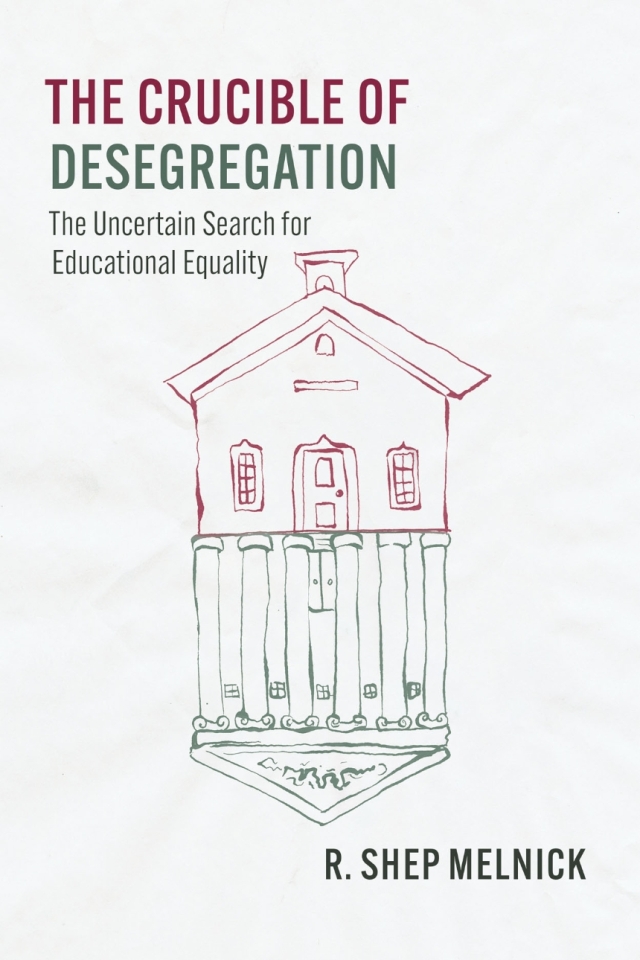The Justice Department And The End Of School Desegregation

Table of Contents
The Early Years: Enforcement and Resistance (1954-1970s)
The initial years following the Brown v. Board of Education (1954) decision saw the Justice Department grapple with widespread resistance to school desegregation. While the Supreme Court declared state-sponsored segregation unconstitutional, translating this landmark ruling into reality proved incredibly challenging. The Department employed various strategies, including filing lawsuits, issuing injunctions, and working with civil rights organizations to force desegregation in schools across the country. However, the pace of change was painfully slow, met with significant resistance from states and local school districts in the South and beyond. School desegregation enforcement was often met with defiance, delaying integration and highlighting deep-seated racial prejudice.
- Significant Court Cases and Impact: Cases like Cooper v. Aaron (1958) solidified the federal government's authority to enforce desegregation, but implementation remained uneven.
- Successful and Unsuccessful Desegregation Efforts: While some districts complied relatively quickly, others engaged in protracted legal battles, employing delaying tactics and resisting integration at every step. The Little Rock Nine incident in 1957 starkly illustrated the resistance faced.
- Resistance from States and Local School Districts: Southern states frequently employed "massive resistance" strategies, including closing schools rather than desegregating them.
- The Role of the Civil Rights Act of 1964: This landmark legislation significantly strengthened the federal government's ability to intervene in cases of discrimination, providing the Justice Department with more robust tools to enforce school desegregation.
The Shift in Approach: From Court-Ordered Busing to "Unitary Status" (1970s-1990s)
The 1970s witnessed a shift in the Justice Department's approach to school desegregation. Court-ordered busing emerged as a key strategy to achieve racial balance in schools, particularly in urban areas grappling with deeply entrenched segregation patterns. This period, however, also saw the rise of significant political backlash against busing. Many argued that it was disruptive, ineffective, and infringed upon local control of schools.
- "Unitary Status" Decree and its Implications: The concept of achieving "unitary status" – a state where a school district is deemed to have eliminated the vestiges of past segregation – became central to the desegregation process. Reaching unitary status often involved complex legal battles and required districts to demonstrate substantial progress in dismantling segregation.
- Supreme Court Cases Shaping "Unitary Status": Supreme Court rulings further defined the criteria for achieving unitary status, influencing the interpretation and implementation of desegregation orders.
- Effectiveness of Court-Ordered Busing: While busing achieved some measure of racial balance in certain areas, its effectiveness remained a subject of debate, with some studies suggesting that it often failed to address the root causes of segregation.
- White Flight and Continued Segregation: The backlash against busing contributed to "white flight," a phenomenon where white families moved from urban areas with court-ordered busing to suburban areas with more homogenous populations, perpetuating segregation.
The Impact of Milliken v. Bradley (1974)
The Supreme Court's decision in Milliken v. Bradley dealt a significant blow to school desegregation efforts. The ruling limited the scope of court-ordered desegregation to within individual school districts, rejecting the notion of inter-district busing to address segregation across multiple districts. This decision effectively curtailed the ability to address regional segregation patterns resulting from housing discrimination and other factors.
- Explanation of the Ruling and Legal Reasoning: The court argued that inter-district remedies required a showing of intentional segregation across district lines, a high burden to meet.
- Consequences for Urban School Districts: This decision severely limited the effectiveness of desegregation efforts in urban areas, where segregation often spanned multiple districts.
- Long-Term Effects on Achieving Meaningful Desegregation: Milliken v. Bradley significantly impacted the ability to achieve meaningful desegregation across many regions of the country, leaving many urban schools heavily segregated to this day.
The Modern Era: The Persistence of Segregation and the Justice Department's Role
Despite decades of legal battles and policy interventions, school segregation persists in many parts of the United States. Modern forms of segregation are often subtler, driven by factors such as residential segregation, funding disparities, and unequal access to resources. The Justice Department's role in addressing these contemporary challenges is complex and its effectiveness remains a subject of ongoing debate.
- Statistics on Current Racial Segregation in Schools: Data continues to reveal significant racial disparities in school enrollment, resource allocation, and educational outcomes, indicating ongoing segregation.
- Challenges Faced by the Justice Department: The Justice Department faces numerous challenges in addressing modern forms of segregation, including the lack of explicit legal mandates for addressing certain forms of segregation, complex legal frameworks, and limited resources.
- Effectiveness of Current Policies and Initiatives: The effectiveness of current policies and initiatives remains debated; critics argue that they often fail to adequately address the root causes of segregation.
- Recent Significant Court Cases Related to School Segregation: Recent legal challenges have attempted to address modern forms of segregation, but often face significant obstacles.
Conclusion
The Justice Department has played a complex and evolving role in the struggle for school desegregation. While early efforts brought about significant legal victories, the subsequent shift in approach and persistent challenges have resulted in a continued struggle for educational equity. The legacy of Brown v. Board of Education continues to be contested and the issue of school desegregation remains a critical social and political issue. Understanding the historical and contemporary role of the Justice Department in school desegregation is crucial to fostering meaningful change. Further research and advocacy are needed to ensure the promise of Brown v. Board is finally realized for all students. Let's continue the fight for genuine school desegregation and equal educational opportunities.

Featured Posts
-
 Voici Les Titres Optimises Pour Le Referencement
May 02, 2025
Voici Les Titres Optimises Pour Le Referencement
May 02, 2025 -
 Sarina Wiegmans To Do List 3 Key Questions Before Euro 2025
May 02, 2025
Sarina Wiegmans To Do List 3 Key Questions Before Euro 2025
May 02, 2025 -
 Rupert Lowe Credible Evidence Of A Toxic Workplace Culture
May 02, 2025
Rupert Lowe Credible Evidence Of A Toxic Workplace Culture
May 02, 2025 -
 Aston Villa Transfer Target Souness Weighs In On Rashford
May 02, 2025
Aston Villa Transfer Target Souness Weighs In On Rashford
May 02, 2025 -
 Understanding This Country People Politics And Economy
May 02, 2025
Understanding This Country People Politics And Economy
May 02, 2025
